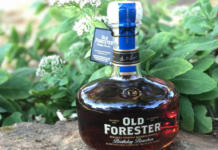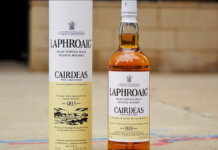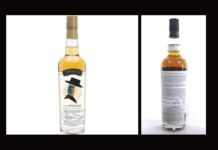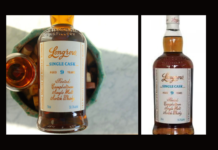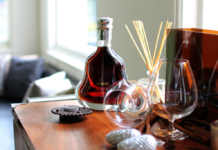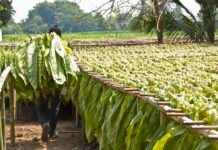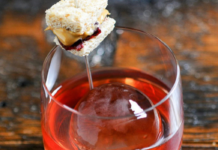Cedar Ridge Distillery crafts its award-winning spirits in small batches in its European-engineered 80-gallon pot still. The lush 5,000 vines and nearly 15,000 square foot winery, distillery, tasting room and event center provide the highest quality wines, spirits and entertainment experience in the area.
Tastethedram spoke to Jeff Quint about what it takes to run this massive winery & distillery while producing some amazing spirits.
 Jeff, tell us about yourself. How did you find yourself immersed in the world of whisky distillation?
Jeff, tell us about yourself. How did you find yourself immersed in the world of whisky distillation?
JQ: Fifteen years ago, my wife Laurie and I decided to get into the wine business here in Iowa. At the time, these new French/American Hybrids were just emerging and we liked where it was headed. Shortly after we planted ten acres of vines and were planning our opening, it occurred to us that Iowa makes more corn than any other state, and most distilled spirits are made from corn, yet we Iowans were importing 100% of the bottled spirits we were consuming here. So we also decided to become Iowa’s first craft distillery. The Quints here in Iowa all trace back to the Quint family in Wintrich Germany, on the Mosel River in the middle of that wine region. To this day, the prominent winery in Wintrich is Weingut Quint. In the last nine generations of Quints, however, I’m the first to embrace whiskey. It just makes sense here in corn country. Our bourbon, for instance, is made from our family-grown corn.
Tell us how the Cedar Ridge Winery & Distillery came about?
JQ: I’m a CPA and was CFO at a couple different growth-oriented companies here in Iowa over the last twenty years. While I enjoyed my work, my wife and I wanted to start an enterprise in our spare time that would eventually become a nice “lifestyle business” for us as we got older. We kept our day jobs at first. We offer our wines (along with food and event space) locally, and whiskey from coast-to-coast. Well, one thing led to another and this business easily supports us both today. I think the thing we’re most proud of is the measured pace by which we’ve grown over the years, allowing us to get this done with no outside investment. We continue to develop at what we believe to be a safe, sustainable pace. We’re hopeful that “slow and steady” still wins the race.
Who is involved?
JQ: My wife and I own Cedar Ridge. Today, two of our sons work in the business. One thing we did a few years ago was to get a few of our key management team members involved with some stock appreciation rights that essentially allow them to participate as owners as well. Beyond that, we have 45 employees, about half of which are full-time.
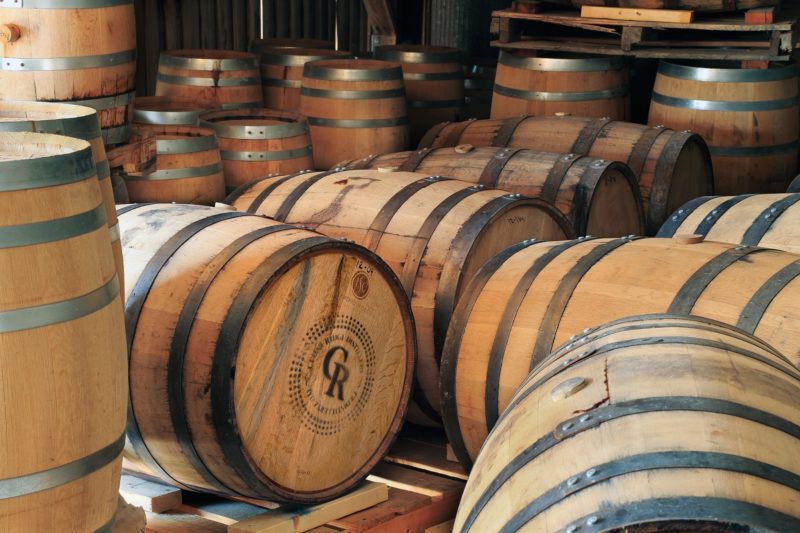 What type of Whiskey Expressions are you currently producing and how are you making them?
What type of Whiskey Expressions are you currently producing and how are you making them?
JQ: Our whiskey range consists of four products:
Bourbon, Malted Rye, Wheat and Single Malt.
Our Bourbon is made from our family-grown corn and comprises about half our whiskey sales. Last year, at the New York World Wine & Spirits Competition, our Single Malt was named “Best American Craft Whiskey”, and that product takes five to six years to get to market, so it has become very difficult to find.
The Single Malt all goes through two different barrel-aging treatments before getting married into our solera tank, which we never let get more than half empty, so it will be in short supply for the foreseeable future.
This year, we will be releasing 12,400 five-packs (5X200ml) of our whiskey – our four basic whiskey expressions plus one single malt finished in our Port casks (we make Port on the wine side of our business) – in select markets across the country. These are branded as Cedar Ridge “American Whiskey Explorer Packs” and the goal is to allow whiskey lovers to try our whole range at an affordable price. The target retail price of the 5-pack is $69.
Jeff, when making your whiskey, what are you aiming for in flavor?
JQ: Cedar Ridge is differentiating itself by producing a cleaner, more approachable whiskey. We do several things to achieve this, we believe. First of all, we ferment off-grain, which means we also distill off-grain. As soon as the starch-to-sugar conversion is complete, we lauter off the grain and instantly cool the wort to room temperature. Secondly, we distill to about 148 proof versus the 134-136 you often see with the mass producers. Lastly, we don’t provide any temperature or humidity controls in our aging houses. Here in Iowa, we lose about 18% to the angel’s share in the first two years, versus more like 12-14% with the big producers. We believe the angels are kind enough to consume more of the volatiles during this process, resulting in a softer expression within the remaining juice.
What are your maturation conditions like?
JQ: As mentioned, we age in a natural environment here in Iowa, where it gets to 10 below in the winter and 100 in the summer. Our rick houses are free of temperature and humidity controls, causing us to lose more to evaporation than most whiskey producers. Within our aging houses, we stack five high and ten deep on each side. As we blend each new batch, we’re careful to select casks from various positions.
Does the climate and geographic location affect the maturation of your whiskey?
JQ: We believe our highly variable climate here in corn country (-10 to 100 Fahrenheit) does create an interesting effect on our final product, causing us also to lose more product to the angel’s share. Mother Nature is in charge of this process, and we try not to interfere with it. The corn farmers here in Iowa learn early in life that you can’t fool her. Once we get the whiskey in barrel, it’s all up to her.
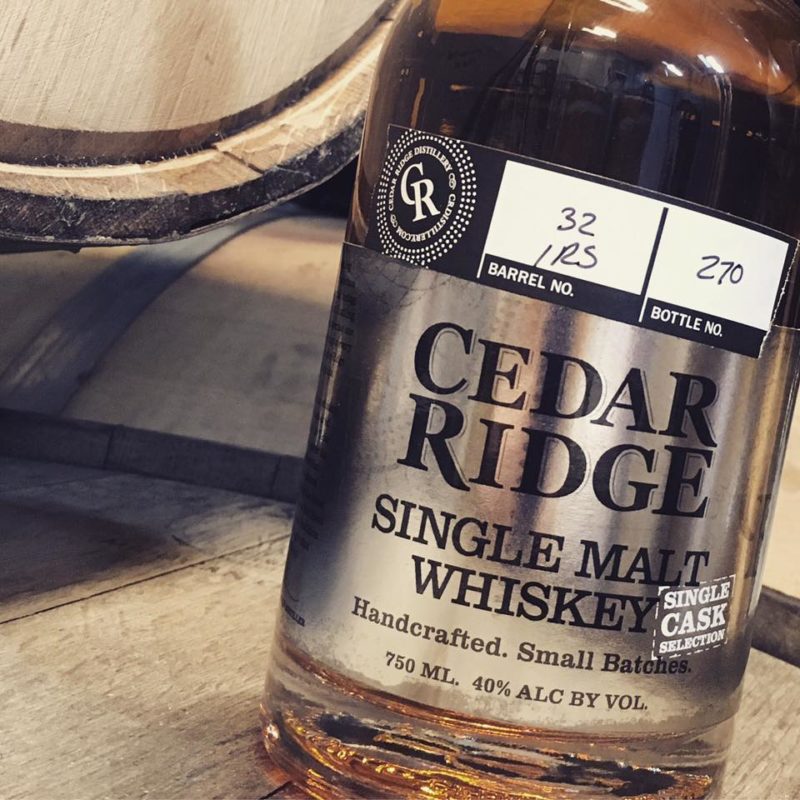 Can you walk us through the whiskey distillation process briefly, from grain to glass.
Can you walk us through the whiskey distillation process briefly, from grain to glass.
JQ: For our Bourbon, we start with our family-grown corn as 74% of the grain bill. We mash it, lauter it, and immediately run it through a heat exchanger bringing it down to room temperature. We then ferment it for three days under temperature control, then one more day to finish up. Then we strip through a larger pot still and finish it in a second pot still, taking appropriate heads and tails cuts. We then add water from our 320-ft deep well that has passed through reverse osmosis and barrel age it at 120 proof.
Our malted rye and wheat go through a similar process, although those grains are purchased in semi-truckload quantities directly from Cargill.
The single malt starts with a similar process, but gets a second cask treatment (split among a proprietary mix of ex-whiskeys, ex-fruits (brandy or wine) and ex-rum casks) before entering the solera from which we never bottle beyond the halfway mark.
I’ve heard that American single malt whiskey is the next big spirit. Do you agree? And if so, why do you think it will rise in popularity?
JQ: Single malts allow a lot of creativity. We believe barley responds well to longer maturations within a more conditioned cask environment. What I mean is, unlike Bourbon that gets smacked in the face with fresh char, barley malt whiskeys seem to like longer periods in used barrels. This gives us more flexibility and more creativity to get the afficianado/connoisseur interested. Our single malt is essentially fully allocated for the foreseeable future, as it takes many years to mature. This trend could stretch out for decades as we take small lots and do a myriad of interesting things with them.
What is your philosophy when creating spirits?
JQ: As a family-owned craft distillery, we’re taking the long road. We have no investors hoping for a quick exit or hammering on us to release more younger products sooner. We’re focused on stretching out the average age of our whiskeys each quarter for the next several years, always selling far less than we are currently making. Patience.
Describe your whiskey in 5 words.
JQ: Cleaner and more approachable.
Do you remember your first dram?
JQ: I do. My older sister snuck me my first whiskey in a bar when I was 15. I wasn’t crazy about the flavor then (knowing her, it wasn’t top shelf!), but I very clearly appreciated the effect.
What is your top 5 list of whisk(e)y to drink that are not your own?
JQ: Glenfiddich 15 – drinking it straight from their vat is partly responsible for our own solera process on our award-winning Cedar Ridge single malt.
Glenfiddich 12 – I think this should be each day’s first sip of single malt – simple citrus, pear and honey.
Johnny Walker Black – as much a I hate supporting the behemoths, this is my “go to” middle of the road Scotch.
Blanton’s Bourbon – the best mass-produced bourbon, in my opinion.
Stranahan’s Colorado Whiskey – my son was a brewer there and it is interesting – single malt grain bill, but finished more like a bourbon would be.
How do you think the next year will go and what are your hopes?
JQ: Cedar Ridge has been at this for twelve years now. We’re just finishing several significant projects that set us up for significant long-term growth, including a state-of-the-art cooling exchange loop, a sustainable stillage reclamation bioswale system right on the property, and land layouts for our next 3 barrel rickhouses. We’re allocating our whiskey sales for now, as we have a relatively large inventory that is getting better every month. We’ve never been more excited about the near-term.
Anything else you’d like to share with our readers?
JQ: Let me know if there is anything else you’d like me to add. Thanks.
For more information on the distillery, please visit the links below:
website: Cedar Ridge Distilling
facebook: https://www.facebook.com/cedarridgeiowa





